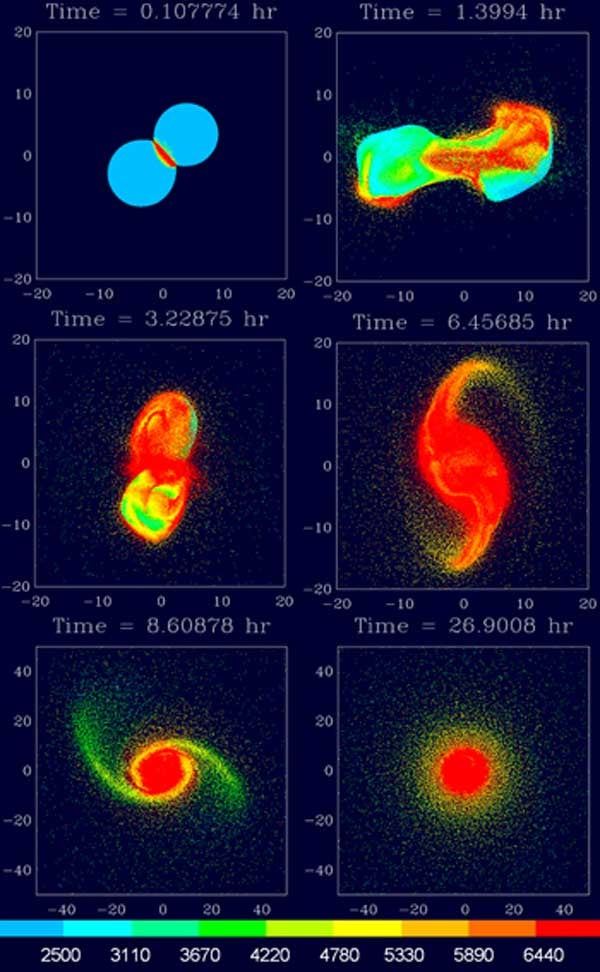“Explaining the Moon’s volatile depletion has been a long-standing mystery, and yet it is a key piece of evidence about how the Earth-Moon system formed,” said Robin Canup from SwRI.
Scientists think the Moon formed from an Earth-orbiting disk of vapor and molten matter produced by a giant impact between Earth and another Mars-sized body approximately 4.5 billion years ago. Previously, scientists had considered that volatiles vaporized by the impact might have escaped before the Moon formed.
“However, few volatiles may have actually been lost because the velocity needed to escape the Earth’s gravity is quite high,” said Canup. “The new research suggests instead that as the Moon completed its growth, volatile-rich melt was preferentially deposited onto the Earth, rather than onto the growing Moon.”
Canup’s team, which included researchers from SwRI, Dordt College, and Washington University, began with an existing computer simulation of the Moon’s accumulation from the disk. This was combined with models for how the temperature and chemical composition of the disk material evolve with time.
The models show that the Moon acquires about the final half of its mass from melt condensed in the inner portions of the disk, close to Earth and just inside the Moon’s initial orbit. Over time, the Moon’s orbit expands due to dynamical interactions with inner disk material. When the Moon is distant enough, it can no longer efficiently accumulate inner disk melt, which is instead scattered inward and assimilated by Earth.
“We find that the inner disk melt remains hot and volatile-poor as it accretes onto the Moon. Eventually the disk cools and volatiles condense. But by the time this occurs, the Moon’s accumulation from this inner disk region has essentially terminated,” said Canup. “So the final materials the Moon accumulates are lacking in volatile elements, even in the absence of escape.”
The scientists suggest that the materials the Moon initially accumulates from the outer disk could be volatile-rich, followed by a final 100 to 500-kilometer layer of volatile-poor material. In that case, the Moon’s volatile content could then increase with depth, depending on the extent of mixing in the Moon’s interior.










